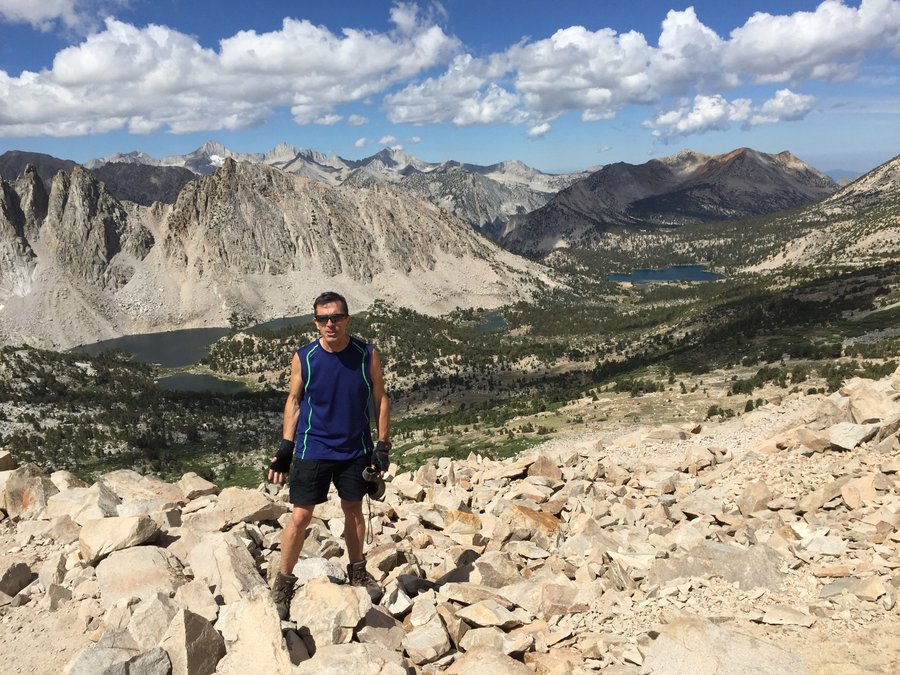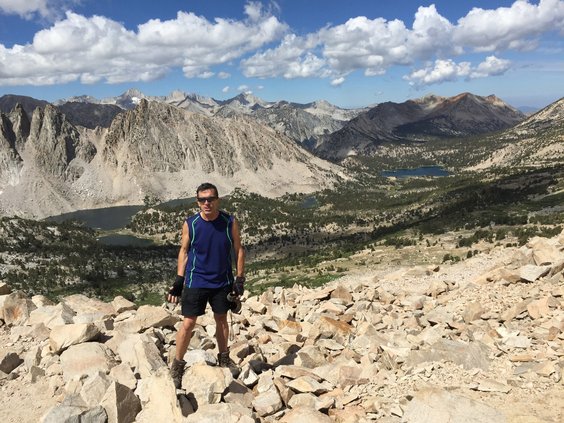“The mountains are calling and I must go.” —John Muir
I answered the call last week.
And like always, it didn’t disappoint.
California is a mountain paradise.
Yes, Colorado has the Rockies.
It’s impressive but it’s not varied.
Inside the political lines that represent California’s boundaries is arguably the greatest smorgasbord of mountain ranges on the planet.
The Sierra.
The Cascades.
The Coastal Range.
Desert ranges such as the Sacramento, Funeral. Angus, and Panamint to name a few.
The variety in California is breathtaking.
Perhaps the starkest two examples can be found in Inyo County, roughly 60 miles apart.
One is the 14,252-foot White Mountain summit you reach by hiking a path virtually devoid of trees but among the few there are bristlecone pines that are the oldest trees on earth in excess of 4,800 years.
It’s part of the Great Basin. As such, to some it looks more like a desert that nature has pushed skyward.
The other is Mt Whitney. It’s a 22-mile round trip hike that takes you above the tree line that marks the heavy forested eastern Sequoia National Park.
From its 14,505-foot summit — the tallest mountain perch in the continental United States — you can scan the horizon for an endless wave of mountain peaks, many capped with snow in mid-July.
We often don’t appreciate the peaks and valleys of living in California.
That’s not a reference to Sacramento shenanigans and the high cost of living that comes along with nature’s peaks and valleys.
Taking a hike among the state’s varied valleys and peaks can put things in perspective.
There is a vastness in California you don’t really appreciate at 70 mph headed for Reno or Las Vegas casinos or taking the only high speed ground option you have to travel between Los Angeles and Northern California that’s better known as Interstate 5.
The natural repertoire of trees, lakes, rock formations, bird and animal life, fauna and more that creates the concoction we call California isn’t replicated elsewhere.
We have less coastline than Florida’s 1,800 miles.
But those 1,264 miles we do have is anything but monotonous.
It goes from sunny sandy beaches you’ll find in Florida to coastline you won’t — the primitive and rugged Big Sur to the forested and fog enshrouded rugged mountain coastline where the tallest trees on earth tower nearby.
But as much as I love California’s offerings, the mountains are what call me.
Trips to Death Valley aren’t to wander on the valley floor. Instead, it’s to explore canyons sans trails or trying to scramble up peaks and prominences.
Likewise, heading west from the Northern San Joaquin Valley it isn’t the cool beaches of Santa Cruz or Stinson that tug at my heart.
It’s the seemingly endless opportunities for forays to various summits in the sub-ranges of the Coastal Mountains with the go to area being the Diablos.
But the biggest magnet for me is the eastern Sierra.
It’s where the mountains rise sharply in short distances above the Great Basin.
They are countless lakes and streams to take in, passes to crest at 11,000 feet or more, and endless views from peaks and prominences devoid of signs of civilization as far as you can see even with the aid of binoculars.
Every hike — even if it is to a place I’ve been before — I learn something new about the home we call California.
But perhaps even more important, I always learn something new about myself.
And it goes beyond the fact 100 rated sun protecting factor, 100 percent DEET, and sweating on a 90-degree day while ascending a pass can be an interesting combination.
This may sound a bit wacky, but I use my annual series of five back-to-back day hikes in the eastern Sierra to push myself.
It’s my idea of a perfect vacation.
You tire yourself out every day, rest, recover, and go at it the next day.
It’s a physical and mental workout you can’t replicate in a gym.
And by mental, I’m not talking psyching yourself up to tackle physical challenges although that does enter it.
I’d be lying if I didn’t admit to harboring thoughts of turning back at some early point in a hike — whether it is a monotonous trek up a rock spewed alluvial fan to reach a desert canyon or a start of an eastern Sierra trek where you end up gaining 1,000 feet within the first mile or so of departing the trailhead.
It’s the same thing when I start a jog.
I’m taking mentality about the ability to spend six or eight hours taking in nature often times when you only come across a few other people — or if you’re lucky, no one else all day long.
Do not misunderstand. Encountering others hiking with fleeting exchanges or engaging in short conversations before continuing on your separate ways can be rewarding.
It’s the ability to let your mind go into deeper thought as you glance across an alpine lake while stretched out on a boulder, take in a Sierra backcountry panorama as you crest a pass, or soak up a slow 360-degree view of what is before you atop a peak.
You come to understand the day-to-day valley and peaks of life — the struggles and rewards — are worth the effort.
It’s no different than hiking 8 to 10 miles a day going up 2,000 to 3,000 feet and coming back down and then doing it all other again the next day.
To savor the little joys of life, it takes a bit of work.
It can wear you down but once you are able to reach your goal and enjoy the rewards it makes it easier to get up the next day and hit the trail again.
This column is the opinion of editor, Dennis Wyatt, and does not necessarily represent the opinions of The Bulletin or 209 Multimedia. He can be reached at dwyatt@mantecabulletin.com






